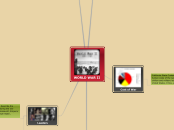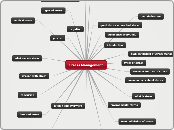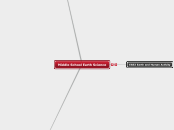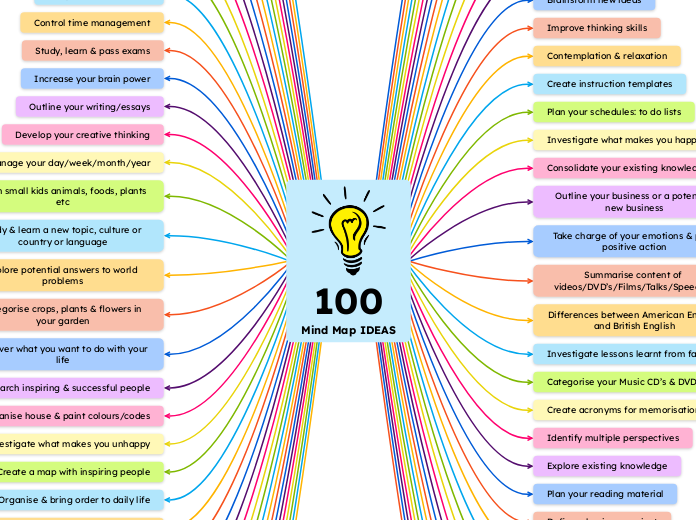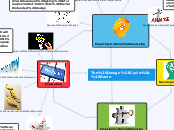WORLD WAR II
Leaders
California State Content Standards 10.8.4 Describe the political, diplomatic, and military leaders during the war (e.g., Winston Churchill, Franklin Delano Roosevelt, Emperor Hirohito, Adolf Hitler, Benito Mussolini, Joseph Stalin, Douglas MacArthur, Dwight Eisenhower).
Goal: Students will be able to describe political, diplomatic, and military leaders during WWII
Objective: Students, using secondary and primary sources, will design a group poster on either Winston Churchill, Franklin Delano Roosevelt, Emperor Hirohito, Adolf Hitler, Benito Mussolini, Joseph Stalin, Douglas MacArthur, Dwight Eisenhower, and complete a worksheet that coincides with each leader.
Closer: The teacher will hang posters around the room. Students will go up to at least two posters and write a summary of the person using the information provided.
As they read, students will complete a worksheet and create a poster that is broken down into the 6 categories.
After the reading and poster have been completed, students will change groups so that each group has a representative from all leaders. Students in the new group will present the information they learned about their leaders (and showcase their poster) while the other group members complete a graphic organizer (mind map) with the information they learn about all five dynasties.
Content Delivery: The teacher will direct students to read there assigned secondary and primary sources. The teacher will ask students to skim the pages and draw clues from the headings, pictures, and notes. The teacher will model filling out the worksheet on Hitler, drawn from the textbook.
The teacher will divide the class into groups of three or four and assign each group one leader that they will become an expert about (Winston Churchill, Franklin Delano Roosevelt, Emperor Hirohito, Benito Mussolini, Joseph Stalin, Douglas MacArthur, Dwight Eisenhower) Students in each group will be directed to read the section of primary, and secondary sources, that relate to their assigned leader, and complete the worksheet.
Lesson Intro: (Engage prior knowledge) The teacher will engage the class in a group discussion of what the term leader means. Ask students to brainstorm several ideas and examples that are relevant to that term.
The teacher will hand out and read the following passage from Adolf Hitler on the idea of National Socialism:
"National Socialism is not a cult-movement - a movement for worship; it is exclusively a 'volkic' political doctrine based upon racial principles. In its purpose there is no mystic cult, only the care and leadership of a people defined by a common blood-relationship. Therefore we have no rooms for worship, but only halls for the people - no open spaces for worship, but spaces for assemblies and parades. We have no religious retreats, but arenas for sports and playing-fields, and the characteristic feature of our places of assembly is not the mystical gloom of a cathedral, but the brightness and light of a room or hall which combines beauty with fitness for its purpose. In these halls no acts of worship are celebrated, they are exclusively devoted to gatherings of the people of the kind which we have come to know in the course of our long struggle; to such gatherings we have become accustomed and we wish to maintain them. We will not allow mystically-minded occult folk with a passion for exploring the secrets of the world beyond to steal into our Movement. Such folk are not National Socialists, but something else - in any case, something which has nothing to do with us. At the head of our program there stand no secret surmisings but clear-cut perception and straightforward profession of belief. But since we set as the central point of this perception and of this profession of belief the maintenance and hence the security for the future of a being formed by God, we thus serve the maintenance of a divine work and fulfill a divine will - not in the secret twilight of a new house of worship, but openly before the face of the Lord."
Students will turn to their partners and think-pair-share what they think Adolf Hitlers idea of government is. The teacher will call on groups of students to share their responses.
Teacher will read short passage from the textbook. Teacher will lead a guided talk regarding the factual information we can get from both texts.
World Involvment
California State Content Standards 10.8.6 Identify and locate the Allied and Axis powers on a map and discuss the major turning points of the war, the principal theaters of conflict, key strategic decisions, and the resulting war conferences and political resolutions, with emphasis on the importance of geographic factors.
Goal: Students will be able to locate the Allied and Axis powers on a map communicate the major turning points of the war, the principal theaters of conflict, key strategic decisions, and the resulting war conferences and political resolutions, with emphasis on the importance of geographic factors.
Objective: Students will show mastery of locating Allied Axis powers, turning points of war, theaters of conflict, key strategic decisions, and geographic factors by identifying where things go on a board game made by the teacher.
Formative – As students are working on where to put their pieces, the teacher will check on individual students to assess the quality of the information they are saying. The teacher will also informally evaluate the responses on the worksheet to check for understanding.
Summative – The teacher will assess and score the completed worksheets for appropriate comprehension.
Lesson Closer: The teacher will facilitate a guided discussion that will touch on each vocabulary word, its meaning, and the information gathered from the notes and game.
Students will do an individual map/timeline work sheet that coincides with the lesson.
Student Engagement: The teacher will turn attention to the large map/timeline pictorial. The class will be divided into four groups. All groups will receive the same game piece. As a group they will have 1 minute to decide where the piece goes on the "game board" A representative of the group will place the game piece. The teacher will then explain the piece and how it fits into the game board. The groups that got it right will get to keep it on the game board. The groups that got it wrong will get their card back. The team with the least cards at the end wins.
Content Delivery: The lesson will focus on identifying allied/axis of powers, turning points of war, theaters of conflict, key strategic decisions, and geographic factors. The teacher will present a slideshow that breaks these into four categories, Powers, War, Strategies, Geography. Students will divide their paper into 4 and take notes during the presentation. The teacher will explain they need to take notes in order to use their information on a game.
Lesson Intro: To activate prior knowledge the teacher will display images of WWII and discuss the importance of that image.
Appeasement/Isolationism
California State Content Standards 10.8.2. Understand the role of appeasement, nonintervention (isolationism), and the domestic distractions in Europe and the United States prior to the outbreak of World War II.
CCSS.ELA-Literacy.RH.6-8.9 Analyze the relationship between a primary and secondary source on the same topic.
Goal: Students will be able to describe the ideals of appeasement, nonintervention, and domestic distractions in pre-WWII Europe and the United States.
Objective: Students, using secondary and primary sources, will complete worksheets and comprehension questions.
Formative – As students are working on their worksheets, the teacher will check on individual students to assess the quality of the information they are writing. The teacher will also informally evaluate the responses on the worksheet to check for understanding.
Summative – The teacher will assess and score the completed worksheets for appropriate comprehension.
Lesson closer: The teacher will facilitate a guided "town hall meeting" that will touch on each vocabulary word, its meaning, and the information gathered from the primary sources. The students summarized comments, and key words, will be written by the teacher on a larger poster board that is broken down into the US and Europe.
Student Engagment: Students will be given one FDR worksheet. As they read, students will complete a worksheet. They will then be given a speech by Charles Lindbergh and will be asked to create 4 comprehension questions that can be answered and supported by the text.
After the reading and worksheets have been completed, students will have pair shares about their information.
Content Delivery: The lesson will focus on the use of primary sources. The teacher will explain and demonstrate how to analyze primary source documents using the SCCC (Source, Close Reading, Contextualize, Corroborate) approach. The approach is outlined in detail on the Reading Like a Historian website.
The teacher will provide background, and activate prior knowledge of a previous unit, on life in Europe and the US after WWI. The teacher will inform the class that they will be exploring the reasons why some European country's and the US were staying out of WWII through analyzing multiple primary source documents with the following historical question in mind, “Why were the United and some European Country's reluctant to get enter WWII?” I will model the first worksheet and we will do it as a class. I will use specific comprehension questions to engage a guided discussion while I am modeling.
Lesson Introduction: The teacher will display images of life during and after WWI and will ask the students to reveal the ways in which people suffered directly from the first world war. .
Cost of War
California State Content Standards 10.8.6 Discuss the human costs of the war, with particular attention to the civilian and military losses in Russia, Germany, Britain, the United States, China, and Japan.
Goal: Students will be able describe the human cost of WWII
Objective: Students will show mastery of comprehension of the human cost of WWII by engaging in partner and group discussion and creating a poster that explains the loss of life in WWII.
Formative – As students are working on their posters, the teacher will check on individual students to assess the quality of the information they are writing. The teacher will also informally evaluate the responses on the posters to check for understanding.
Summative – The teacher will assess and score the completed posters for appropriate historical content.
Closer: The teacher will hang posters around the room. Students will hold a town hall meeting discussing the poters and their ideas, feeling, and facts.
Student Engagement: Students, in groups of 4-5, will be given a county. They will be asked to research the military and civilian loss of life. They will then make a poster that includes images, 2 quotes, and the numbers of fatalities in graph form.
They will then participate in a Gallery Walk.
"During a Gallery Walk, students explore multiple texts or images that are placed around the room. Teachers often use this strategy as a way to have students share their work with peers, examine multiple historical documents, or respond to a collection of quotations. Because this strategy requires students to physically move around the room, it can be especially engaging to kinesthetic learners."
Content: The main focus of this lesson will be to discuss the human cost of war and relate the numbers with actual people who were lost.
Teacher will read this quote...
"I hate war as only a soldier who has lived it can, only as one who has seen its brutality, its futility, its stupidity."
~General Dwight D. Eisenhower
Students will turn to their partners and think-pair-share what they think about this quote. The teacher will call on groups of students to share their responses.
Teacher will show the slide show on the human cost of lives in WWII.
Lesson Intro: (Engage prior knowledge) The teacher will engage the class in a group discussion of what the consequence of war is.
The teacher will create a word map that has war in the middle and all the "cost of war" that they have learned thus far attached to it.
Teacher will read this quote...
"I hate war as only a soldier who has lived it can, only as one who has seen its brutality, its futility, its stupidity."
~General Dwight D. Eisenhower
Students will turn to their partners and think-pair-share what they think about this quote. The teacher will call on groups of students to share their responses.
Teacher will read short passage from the textbook that states the human cost of lives in WWII.
Cause and Consequences
CCSS.ELA-Literacy.RH.6-8.7 Integrate visual information (e.g., in charts, graphs, photographs, videos, or maps) with other information in print and digital texts.)
California State Content Standards 10.8.5. Analyze the Nazi policy of pursuing racial purity, especially against the European Jews; its transformation into the Final Solution; and the Holocaust that resulted in the murder of six million Jewish civilians.
Goal: Students will be able to explain policies and consequences of policies leading up to the Holocaust
Objective: Students will complete two worksheets that determine comprehension of Nazi policies, the final solution, and the result of the Holocaust.
Formative – During the lecture the teacher will stop and ask students guided questions that check for comprehension. During the student activity, the teacher will roam around the room and examine student answers to check for understanding.
Summative – Evaluation of student responses on the worksheet will help the teacher determine if the goals and objectives of the lesson were met.
The teacher will facilitate a guided "town hall meeting" that will touch on each vocabulary word, its meaning, and the information gathered from the primary sources. The students summarized comments, and key words, will be written by the teacher on a larger poster board that is broken down into the US and Europe.
Students will be given one FDR worksheet. As they read, students will complete a worksheet. They will then be given a speech by Charles Lindbergh and will be asked to create 4 comprehension questions that can be answered and supported by the text.
After the reading and worksheets have been completed, students will have pair shares about their information.
The lesson will focus on the use of primary sources. The teacher will explain and demonstrate how to analyze primary source documents using the SCCC (Source, Close Reading, Contextualize, Corroborate) approach. The approach is outlined in detail on the Reading Like a Historian website.
The teacher will provide background, and activate prior knowledge of a previous unit, on life in Europe and the US after WWI. The teacher will inform the class that they will be exploring the reasons why some European country's and the US were staying out of WWII through analyzing multiple primary source documents with the following historical question in mind, “Why were the United and some European Country's reluctant to get enter WWII?” I will model the first worksheet and we will do it as a class. I will use specific comprehension questions to engage a guided discussion while I am modeling.
Students will create a CCD Chart using the key terms for the lesson. The CCD Chart will include the term, the prediction, the definition, and an image or graphic that depicts the meaning of the term. Key terms include:
Appeasement
Nonintervention
Isolationism
Corroborate
Contextualize
The teacher will display images of life during and after WWI and will ask the students to reveal the ways in which people suffered directly from the first world war. .
